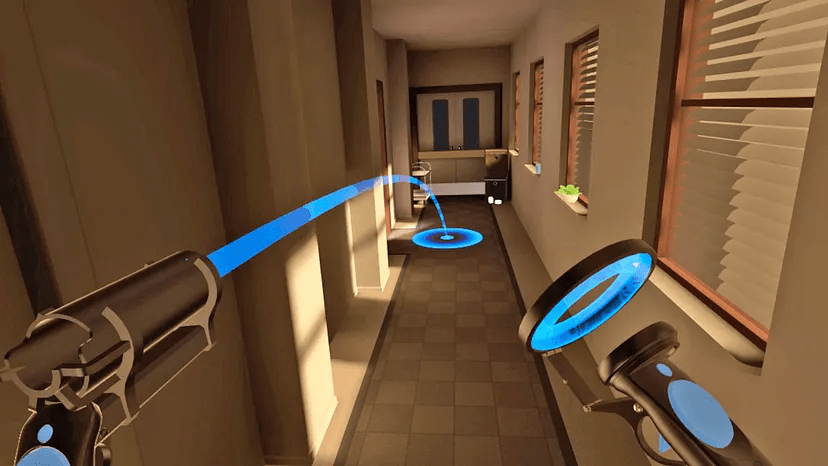Virtual Reality (VR) has revolutionized the way users interact with digital environments, but one persistent challenge is creating efficient and comfortable methods of virtual locomotion. In this mini-review, we explore the widely implemented technique of teleportation, which enables users to move within VR spaces beyond the limitations of physical tracking areas, minimizing the risk of VR sickness.

Introduction
The primary hurdle for VR developers and researchers lies in virtual locomotion techniques that seamlessly navigate users through virtual environments without inducing VR sickness. While room-scale tracking allows for one-to-one mapping of movements, it is constrained by physical space. To overcome these limitations, Virtual Locomotion Techniques (VLTs) such as teleportation becomes essential.
Survey Methodology
This review delves into various studies comparing teleportation with other VLTs. Using a snowballing search method, 27 peer-reviewed papers were selected based on criteria like empirical evaluation with users and the use of Head-Mounted Displays (HMDs), the prevailing VR platform. The studies were categorized into two groups: those comparing teleportation with other VLTs and those proposing improvements to teleportation.
Studies with Teleportation
The studies highlighted diverse factors influencing teleportation, such as operation methods (motion sensing controllers, eye gaze, etc.), translation techniques (discontinuous or continuous), concordance of orientation, and the range of teleportation. Findings consistently showed teleportation causing minimal VR sickness, providing high performance, but at the expense of lower presence and increased spatial disorientation.
Teleportation Improvements
Several studies aimed to enhance teleportation, introducing hands-free methods like eye gaze and foot input, and exploring third-person perspectives to address its inherent limitations. Noteworthy improvements included the “Jumper Metaphor,” “Point and Teleport,” and “Redirected Teleportation,” each offering unique advantages in terms of spatial disorientation, efficiency, and usability.
Discussion and Future Work
While teleportation emerged as a favorable VLT with minimal VR sickness, studies suggested a need for more realistic scenarios in evaluations, especially in gaming contexts where controllers multitask. The review also highlighted the importance of exploring teleportation in multi-user environments to understand its impact on social interaction and gameplay.
Conclusion
In conclusion, teleportation remains a key player in VR locomotion, addressing challenges associated with VR sickness. As improvements continue to emerge, future research should focus on enhancing teleportation’s presence, especially in multi-user settings, and evaluating its usability under diverse scenarios. With teleportation likely to maintain its role as a default VLT, understanding its nuances and refining user experiences is pivotal for the future of immersive digital interactions.































